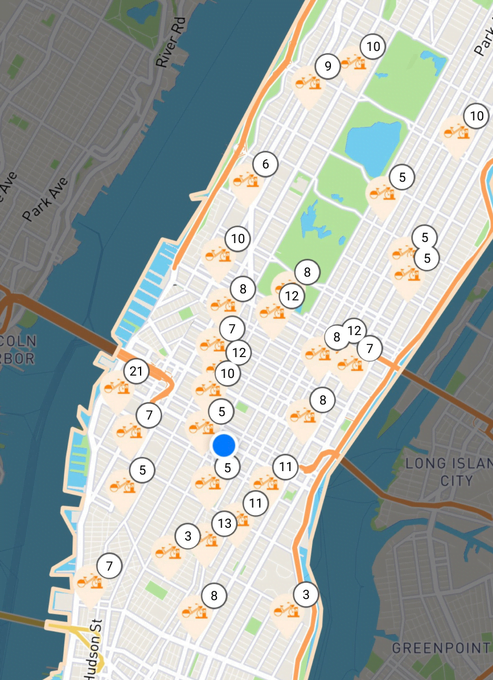Micro enterprises, along with small and medium enterprises, are significant contributors to the socio-economic dynamic of India. Micro enterprises participate in exports and contribute prominently to India’s Gross Domestic Product.
The sector has contributed immensely to boosting entrepreneurial spirit among people from all walks of life and economically weaker segments of society. Per the Ministry of Micro, Small & Medium Enterprises, the MSME sector has more than 7.9 million registered companies as of 27th March 2022, and Micro enterprises constitute more than 95 percent of the total number.
In a significant development, the Government of India announced a special initiative called “Promotion of MSMEs into North Eastern Region and Sikkim’ in June 2022. This will surely encourage entrepreneurs from our beloved seven sisters and Sikkim.
Micro enterprises are easy to start and the most common category of business. Low start-up cost makes them accessible and generates employment opportunities in rural, semi-urban, and financially underprivileged sections of society.
In the following sections, we will begin with the micro-enterprise definition, explain the types, pros & cons, and conclude with the impact of the Covid pandemic.
What is Micro Enterprise?
Table of Contents
Micro-enterprise or Micro business is a small business with ten or fewer employees with defined turnover and investment capital. Most of these businesses are self-funded and proprietorship in structure.
The government of India and several state governments also provide loans and subsidies to encourage micro-enterprises and the new breed of entrepreneurs.
Categories of Micro Enterprises
The Micro, Small & Medium Enterprises Development Act 2006 classified Micro enterprises into two classes: Manufacturing Enterprises and Services Enterprises.
The government of India revised the MSME Development Act of 2006 and announced the new definition of Micro enterprises under the Atmanirbhar Bharat package declared on 13th May 2020. According to the new definition, the investment threshold increased to 1 Crore INR and turnover up to 5 Crores INR for manufacturing and service enterprises. Source
Types of Micro Enterprises
Micro enterprises cover a broad spectrum of businesses and self-employed individuals. This category of business includes independent contractors, freelancers, and small businesses.
Here is a list of some of the prominent micro-enterprise businesses:
- Plumbers
- Carpenters
- Electricians
- Home-based businesses like content development, jewelry design, etc
- Dry Cleaners
- Bakery Owners
- Independent Contract Workers
- Photographers
- Catering Services
- Bed & Breakfasts
- Drivers with Cab and Bike Aggregators
- Accountants and IT Practitioners
- Online Store Owners
- Pet Shop Owners
Pros of Micro Enterprise
Freedom and Satisfaction
You are the boss. This thought offers more freedom and satisfaction than a 10 to 6 office. You can enjoy this rare combination at your micro business.
Optimum Utilisation of Resources
Being at the helm of affairs, you can utilize available resources according to the plan and at their best capacity.
Wings to Ideas
We may not always get a chance to speak our minds or present original ideas in the office. Your own business allows you to broadcast your thoughts to the world.
Easy to Start
The government of India supports the MSME sector through subsidies, loans, and stimulus packages. Compliance and legal work are becoming digital. Recent societal, behavioral, and legislative changes have made opening a business in India relatively simple.
Less Capital Requirement
Micro enterprises need low capital investment. You can start these businesses at home or even on a laptop.
Simple to Operate
Service-based micro-enterprises can be managed on laptops and systems. It means you can operate from anywhere and anytime at your convenience. In addition, with a smaller workforce, operational management becomes simpler.
Financial Rewards
As a business owner, you stand a better chance of becoming financially independent than a full-time job. Micro enterprises require less operational and marketing expenses, which gives higher profit and faster break even.
Rural Transformation
In a country like India, micro-enterprises have brought revolutionary changes at the grassroots. People looking for jobs now own a business and employ a couple of other people. This gives them confidence, improves disposable income, and boosts rural & semi-urban Indian economies.
Cons of Micro Enterprise
Multitasking
Micro enterprises are mostly proprietorship businesses. It means you have to don multiple hats simultaneously, which could reduce productivity, lower concentrations, and affect business performance.
High Stress
Managing a business all by yourself can cause stress. You need to juggle your personal and entrepreneurial life. Sometimes, this can cause the business to suffer.
Difficulty in Getting Finance
Though government supports easy finance options for micro-enterprises, it still takes a great deal of documentation, visits, etc., for loan approval. Banks may delay the process because these people are at higher risk of becoming NPA.
Limited Resources
Micro enterprises are self-funded and have small loan amounts. They own limited resources and can not complete bulk orders. It poses challenges for expansion and can not compete for big corporate orders or government projects. They have to deal locally,, which leads to low turnovers and NPA pressure on lending institutions.
Too Much Time Commitment
Micro-enterprise needs a bold decision to start something on your own, devote time, manage everything, arrange capital, and more. It is time-consuming and needs lots of patience.
After Effects of Covid On Small Enterprise
The Covid era saw significant changes in the landscape of micro-enterprises, such as:
- The government of India revised the definition of a micro business under Atmanirbhar Bharat (Please refer to Categories of Micro Enterprises above)
- Priority sector lending
- 93,048 Micro enterprises became small enterprises between July 2020 and July 2022
- Since the launch of the Udyam portal on 1st July during the financial year 2020-21, 28,729 micro enterprises rose to become small enterprises, and 656 micro enterprises became medium enterprises.
- The government included 2.5 crore retail and wholesale traders to expand the base of the MSME sector in 2021
Let’s Wrap Up
Micro-enterprises empower rural and semi-urban India. Micro,, along with small and medium businesses, are often called the backbone of the Indian economy. The sector constitutes about 30 percent of the GDP and provides lakhs of employment opportunities. With the digital revolution, micro business is becoming more efficient, and productive and offers better ROI.






